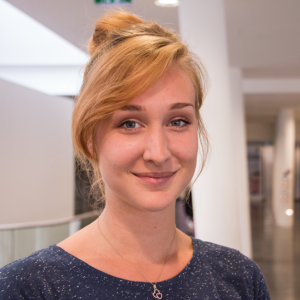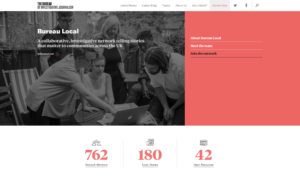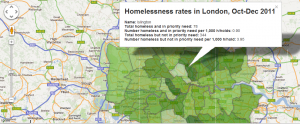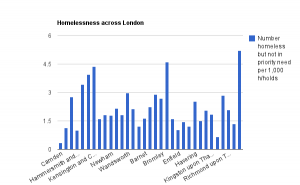Newspapers which tend to primarily focus on local issues, often represent the majority of media outlets in each country’s media landscape. They deliver a number of important journalistic functions, like holding local authorities to account, supporting democratic and civic needs and shaping the overall reputation of journalism. Thanks to their powerful human interest reporting, they shine a spotlight on local issues and offer unique local content that is is not necessarily found elsewhere.

As co-funder of the startup Urbs Media and director of the RADAR project, Alan Renwick has over 30 years experience in local, national and international news industries. Within his work, he provides local newsrooms with a regular feed of data-driven stories and scale up local news production by combining the work of journalists and Artificial Intelligence.
In this interview, he tells us why local journalists should not hesitate to use data within their work and how to turn national datasets into local content:
How can local journalists use data in their reporting?
There are many things that local journalists can do with data journalism. They already have their own data journalism efforts, like their own datasets, they are investigating their own local issues, and they have a lot of unique content. It is all just starting on a national level with national datasets but after that, local journalists have to unlock the fact that these datasets have got a lot of local information within them and can be used complementary to anything else they are doing. So they might put some local interviews around it or make some analysis and build it up in a much more colourful, local story.
The Bureau Local is a collaborative, investigative journalism network in the UK which stands as a great example of how data journalism is thriving
You are the director of RADAR (Reports And Data And Robots), a news agency that combines humans and machines to deliver data-based news stories to local newsrooms. How can local journalists make use of those stories?
What we do with RADAR is to hopefully give those local newsrooms skills and raw material to work with. This comes in form of a regular feed of data- driven stories for that they might normally not have the time and resources to look at. The reason for that is that most of them have quite a high philosophy behind them and there is a high number of data stories around.
So, what we actually do then is to take national datasets and do a fusion of local and national journalism. That means, we try to understand the generics of national data and see how these stories might vary for every local area. Then we look at the different variables to figure out how many different outcomes there might be and write story templates for every eventuality. For instance, we might put the numbers from a spreadsheet into a sentence such as “since w, house prices in x have increased by y/fallen by z/stayed the same”. This means that if you have 500 rules you might have 500 different stories. From the same data you might have different types of stories with different headlines and different content.
 RADAR is a collaboration between the Press Association and Urbs Media that delivers news stories to local media, combining the work of humans and machines.
RADAR is a collaboration between the Press Association and Urbs Media that delivers news stories to local media, combining the work of humans and machines.
What is your top advice for local journalists who want to work with data?
Many local newsrooms want to write very few numbers into their stories even if all the sources come from data. That is why my advice for local journalists is to treat data journalism just like any other source. There might be a broader, softer story that comes from it. They just have to understand the genesis of it, where it comes from, then integrate it, be sure of what it means, what the facts are and then create the story in their very traditional way.
Learn the data skills but as you use them, use them in the way that you would use any other source.
______________________________________________________________________________________________
 Michaela Gruber is a journalism and media management student, based in Vienna, Austria. During her studies she spent a semester abroad in France, where she started working for HEI-DA.
Michaela Gruber is a journalism and media management student, based in Vienna, Austria. During her studies she spent a semester abroad in France, where she started working for HEI-DA.
As the company’s communication officer, she is in charge of the Data Journalism Blog and several social media activities. This year, Michaela was HEI-DA’s editor covering the Data Journalism Awards in Lisbon, Portugal.




